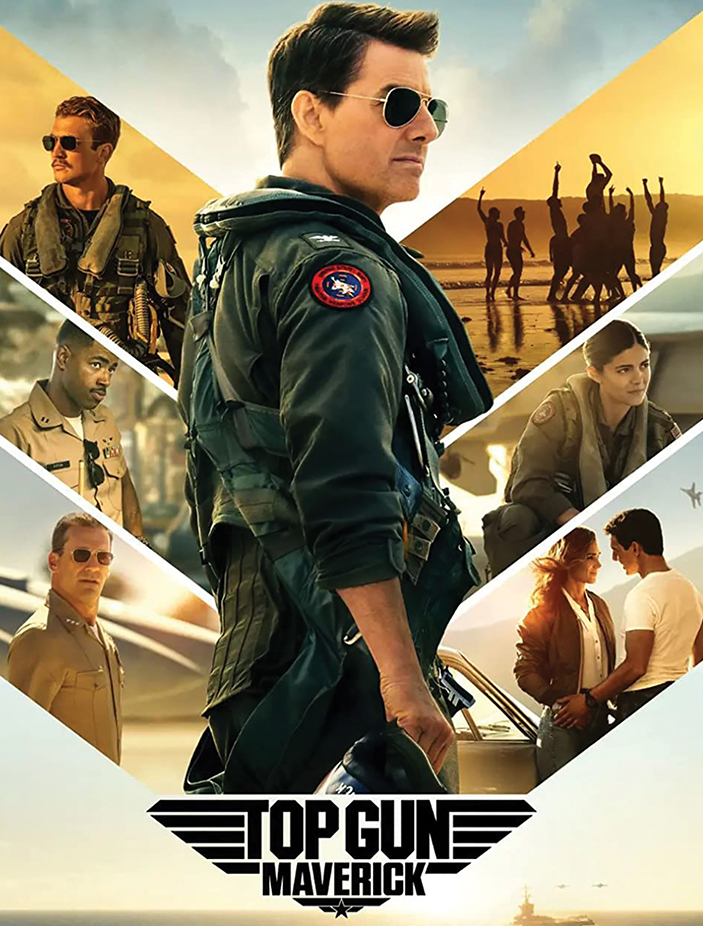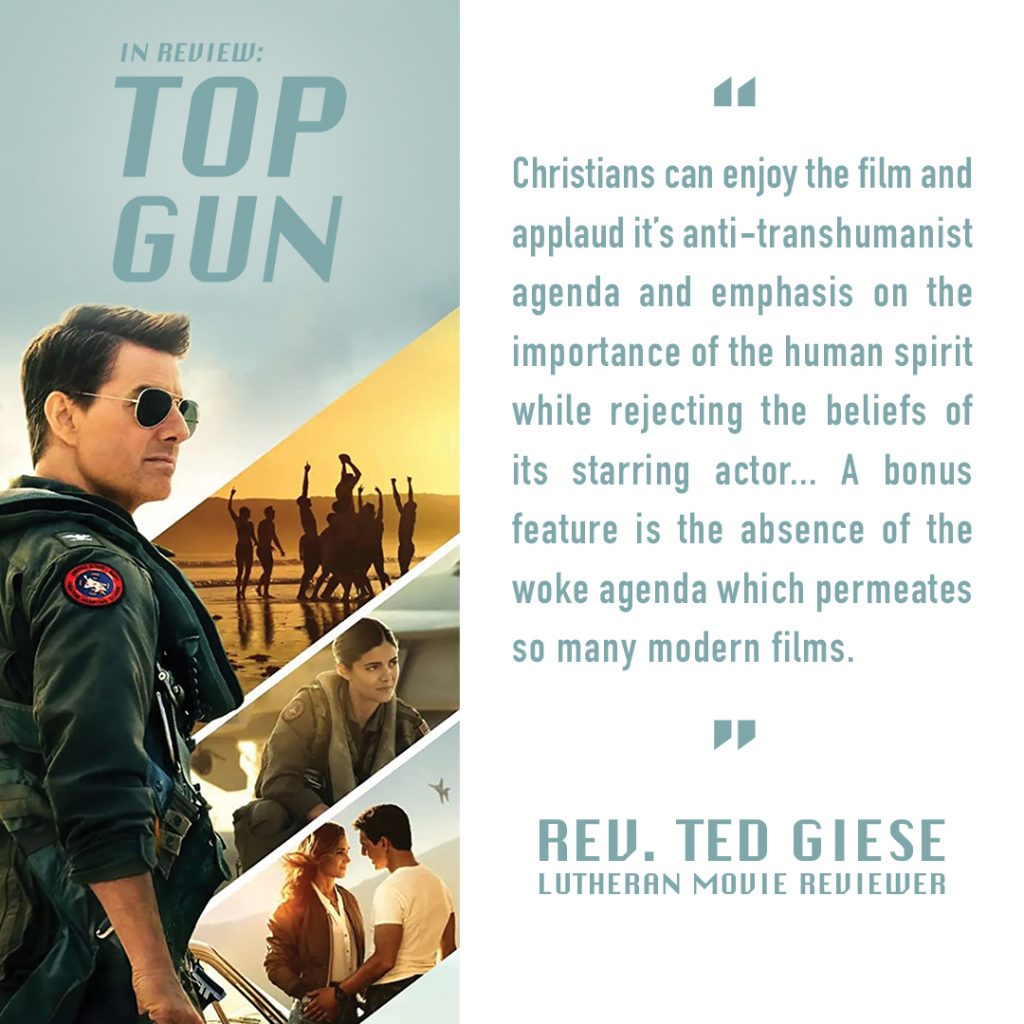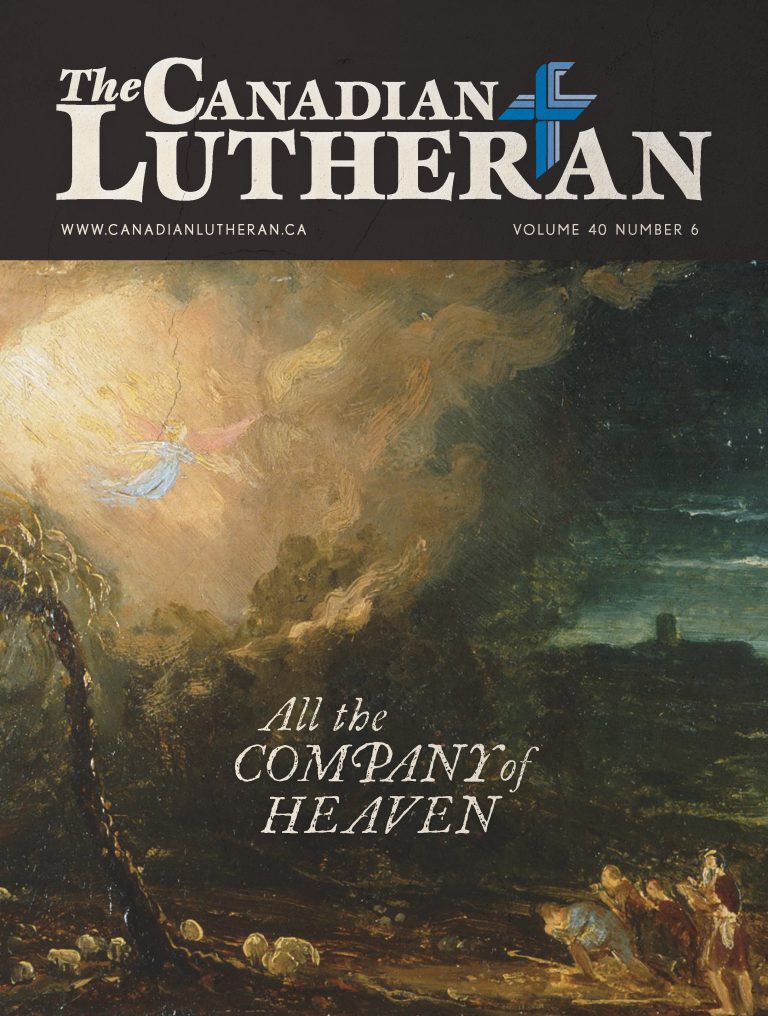Top Gun still flying high
 by Ted Giese
by Ted Giese
Capt. Pete ‘Maverick’ Mitchell, portrayed by Tom Cruise, is sent to the United States Navy’s Strike Fighter Tactics Instructor program (SFTI, otherwise known as “Top Gun”) to train a team of the Navy’s best pilots for a clandestine mission. With only weeks to prepare and faced with unresolved personal relationships from his past, Maverick must gain the respect of his students and prepare them for their seemingly impossible assignment before a foreign military-grade uranium enrichment facility becomes operational.
Director Joseph Kosinski is proving to be a bit of a Top Gun himself by again delivering a riveting sequel to an iconic 1980s film, balancing audience expectations and nostalgia with something new, fresh, and compelling. Fans of the original 1986 movie may appreciate it even more after seeing what Kosinski has accomplished here; Top Gun: Maverick is proof that a sequel doesn’t have to vandalize or kill the past to become what it’s meant to be. At the same time, even casual fans of the original can walk away from this sequel entertained and satisfied.
The impulsive Maverick’s knack for avoiding advancement makes him a highly decorated naval captain but at great personal cost, leaving a life-long trail of unresolved personal relationships. Over and over he manages to narrowly avoid being drummed out of military service based on his skills as an aviator and shielded by Adm. Tom ‘Iceman’ Kazansky. With his unexpected assignment to the Top Gun school, Maverick must sort out two of his unresolved personal relationships, providing a link from this film to the original. One is a romantic entanglement with Penny Benjamin, a character only mentioned in dialogue in the original Top Gun. She was an Admiral’s teenage daughter that Maverick had dated. The inappropriateness of that relationship also underscores questions around Maverick’s relationship with the “almost” off-limits civilian contractor Charlotte ‘Charlie’ Blackwood in the original film.
Top Gun: Maverick is the sequel audiences deserve after all the dreck and broken promises they’ve endured in the past decade of reboots, remakes, reimaginings, sequels, and prequels.
These romantic relationships outside the cockpit reflect Maverick’s impulsivity, which causes him to push the envelope to the edge and sometimes beyond in the cockpit as well. Of course, 36 years will temper these qualities; in the arena of love and romance, Maverick is more constrained this time around as he rekindles his relationship with Penny. Audiences expecting the white-hot heat of the original will need to make do with a more restrained smoldering passion. Penny is a divorcée with a teenage daughter, Amelia. For her, any relationship with Maverick would need to be more than a fling, and they both know it.
The other key relationship is a failed paternal relationship with Goose’s son, Lt. Bradley ‘Rooster’ Bradshaw. Rooster’s desire to follow in his father’s footsteps as a naval aviator has been hampered by Maverick, both as a result of guilt surrounding Goose’s death in the original film and a secret off-screen deathbed promise to Rooster’s mother to keep her son from potentially dying like his father. After Goose’s tragic death, Maverick tried to be a father figure to Bradley but over time this back-fired, leading Rooster to resent Maverick. Resolving this relationship is the heart and soul of the new film. And while the way this relationship is eventually resolved is a little hokey and predictable it is nevertheless satisfying. But this is something audiences will want to discover on their own.
What can be said is that, from a Christian perspective, Maverick’s relationship with Rooster, and by extension Rooster’s deceased parents, finds him struggling to find the best way to fulfill the commandment to honour mother and father. For the sake of their living son, Maverick must find a way to honour their memory and their roles as mother and father in Rooster’s life. When men and women stand up for a child being baptised, there is an expectation that, as sponsors/godparents, they would fill the role of spiritual guardians if the parents ever met untimely deaths (even if not in the capacity of legal guardianship). Maverick’s care and concern for Rooster can be seen in this light.
While Maverick’s relationship with Rooster is not spiritual in the Christian sense, it is one where he provides advice as a wiser father figure to a younger son. Maverick encourages Rooster and the other Top Gun pilots to rely on instinct and intuition because he has learned—as a result of his own personal impulsiveness, safety-netted by thousands of hours of skills-based training and inside-out knowledge of aircrafts—that in crucial moments at high speeds, pausing to think can eat up the clock and bring death. This differs from the advice given in so many other films where the hero is encouraged to “trust their feeling” or “believe in themselves” without having put in the thousands of hours of training, practice, and study to fall back on. Many films want to leapfrog over the hard work straight to the heroism.
The other component of Maverick’s advice is that it’s not the plane but the pilot flying the plane that makes the difference. All the technology in the world, if it’s in the hands of someone who hasn’t put in the time and training, won’t make a difference in the end. There is always the unexpected to be faced but experience and intuitive split-second reactions can make the difference between life and death in the cockpit.
 Why is this important? At the beginning of the film while being dressed down by Rear Admiral Chester ‘Hammer’ Cain for risking his life in an unauthorized test of an experimental hypersonic plane, Cain says: “The end is inevitable, Maverick. Your kind is headed for extinction.” Maverick replies: “Maybe so, sir. But not today.” Cain doesn’t mince words, explaining that soon unmanned drones will replace pilots. This early scene, together with the focus of Maverick’s advice and training with the younger pilots (emphasizing instinct and intuition—qualities missing in artificial intelligence), makes Top Gun: Maverick a decidedly anti-transhumanist film. Kosinski’s film displays an underlying conviction that human spirit is vital and important, and should not be discounted simply because of scientific advancement.
Why is this important? At the beginning of the film while being dressed down by Rear Admiral Chester ‘Hammer’ Cain for risking his life in an unauthorized test of an experimental hypersonic plane, Cain says: “The end is inevitable, Maverick. Your kind is headed for extinction.” Maverick replies: “Maybe so, sir. But not today.” Cain doesn’t mince words, explaining that soon unmanned drones will replace pilots. This early scene, together with the focus of Maverick’s advice and training with the younger pilots (emphasizing instinct and intuition—qualities missing in artificial intelligence), makes Top Gun: Maverick a decidedly anti-transhumanist film. Kosinski’s film displays an underlying conviction that human spirit is vital and important, and should not be discounted simply because of scientific advancement.
That said, Christian viewers should note that the film’s emphasis on glorifying the fusion of physical, mental, and spiritual excellence may well have roots in actor Tom Cruise’s personal adherence to Scientology. Cruise—who is in many ways the public face of Scientology—has been developing this project with fellow producer Jerry Bruckheimer for more than ten years. Elements of Cruise’s faith seem to have influenced the end product’s focus on the aggrandizement of human excellence, exemplified in Cruise’s character Maverick.
Christians too are encouraged to strive for perfection in this life; as Jesus says, “You therefore must be perfect, as your heavenly Father is perfect” (Matthew 5:48). But we know this is unattainable in this world and will only be truly attained in the resurrection. Scientologists on the other hand believe it is possible to attain perfection in this life, and Tom Cruise is an individual working with every fiber of his being to prove this belief true. But remember: the original film was supported by the U.S. Department of Defence as a potential recruitment tool; Cruise may well view the sequel as a recruitment tool for Scientology. After all, if Scientology can produce a specimen of humanity like Cruise—so the thought process would go—perhaps people should consider joining? At any event, Christians can enjoy the film and applaud it’s anti-transhumanist agenda and emphasis on the importance of the human spirit while rejecting the beliefs of its starring actor.
In fact, Top Gun: Maverick has a lot to offer general audiences. Its emphasis on honour, valour, and vocational excellence, when understood as service to neighbour over and against personal development, is a welcome change—as is the decision to portray its hero as a hero and not as a bitter disillusioned old curmudgeon. Everything about this film harkens to a bygone era of film making, but better thanks to the highest quality film crews and equipment. There is a synergy between the philosophy that drives the film’s story and the film’s production. This care for authenticity extends even to the incorporation of Val Kilmer as Iceman into the film. The way Kilmer’s real-life struggle with throat cancer is woven into the plot is admirable. They don’t sidestep the truth of his condition but rather provide a way to honour him in a fitting way. The tactful and poignant scene between Maverick and Iceman will be as memorable as the aerial acrobatics and stunt flying.

Viewers who are tired of the overuse of CGI in modern action films should support the film. A bonus feature is the absence of the woke agenda which permeates so many modern films. Yes, the film has a vague faceless enemy fought in an unnamed country, but then so did the original film. Beat for beat in many ways it follows the pattern of the original Top Gun yet somehow doesn’t come across as derivative. And it respects the source material it is building on—something lacking in many sequels today. Top Gun: Maverick is the sequel audiences deserve after all the dreck and broken promises they’ve endured in the past decade of reboots, remakes, reimaginings, sequels, and prequels.
———————
Rev. Ted Giese is lead pastor of Mount Olive Lutheran Church, Regina, Saskatchewan, Canada; a contributor to The Canadian Lutheran, Reporter; and movie reviewer for the “Issues, Etc.” radio program. For more of his television and movie reviews, check out the Lutheran Movie Review Index.



